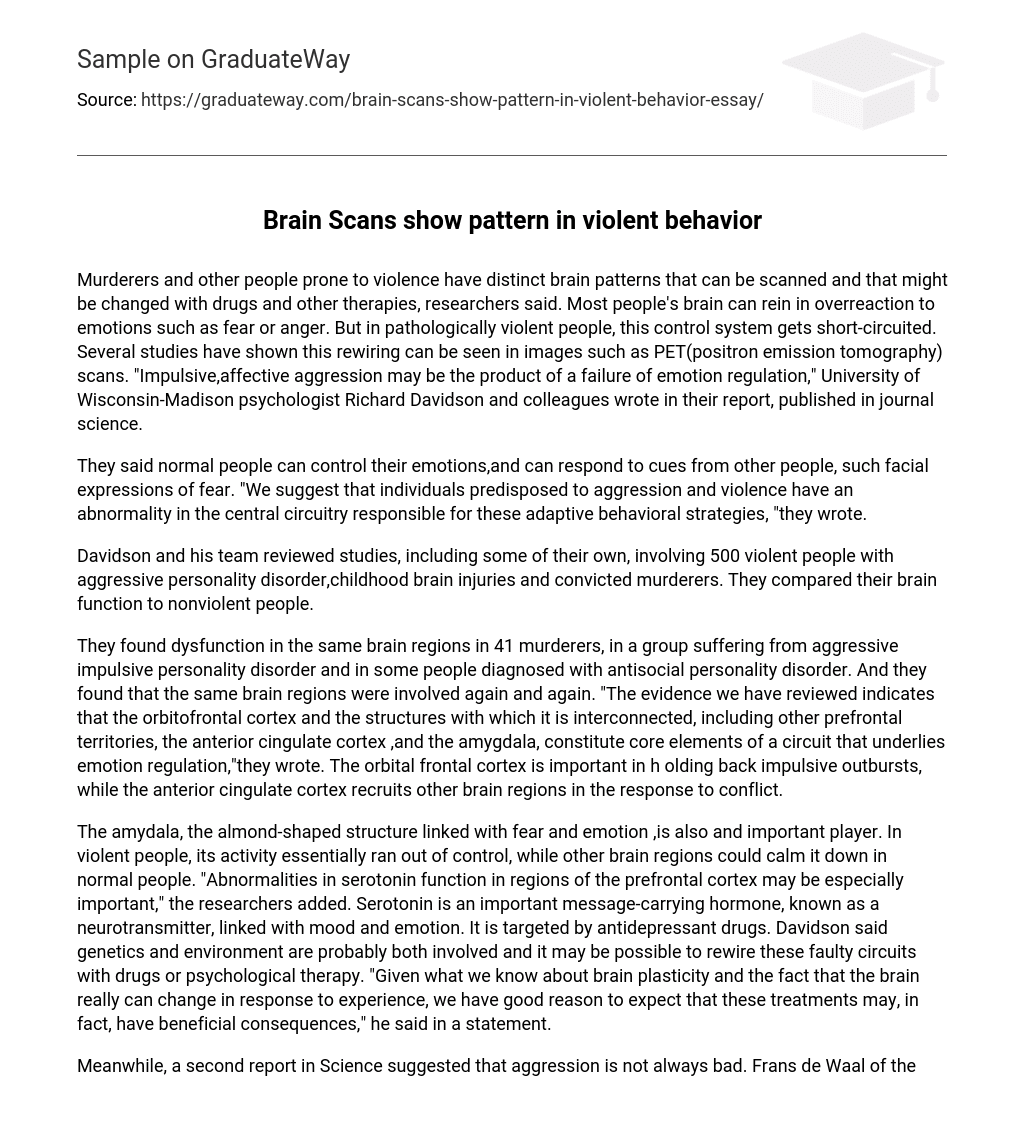According to a study published in the journal Science, murderers and individuals prone to violence have distinct brain patterns that can be detected through scans. These patterns may potentially be changed using drugs and other therapies. PET scans have shown that those with a propensity for violence have a disrupted control system for regulating emotions like fear and anger. The research report by psychologist Richard Davidson and his colleagues at the University of Wisconsin-Madison suggests that impulsive and affective aggression could be caused by a failure in emotion regulation.
They claim that individuals who do not have any abnormalities can successfully control their emotions and respond to signals from others, like facial expressions of fear. They contend that individuals with a tendency towards aggression and violence have a faulty central circuitry which is accountable for these appropriate behavioral reactions.
Davidson and his team conducted a comprehensive review of various studies, which encompassed their own research as well. The studies centered around three distinct groups: individuals diagnosed with aggressive personality disorder, those who had experienced childhood brain injuries, and convicted murderers. The aim was to analyze and compare the brain function of these particular groups in relation to nonviolent individuals.
In a study, it was found that dysfunction in the same brain regions was observed in 41 murderers, individuals with aggressive impulsive personality disorder, and those diagnosed with antisocial personality disorder. These brain regions were consistently involved across all three cases. According to the authors of the study, this indicates that the orbitofrontal cortex and its interconnected structures, including other prefrontal territories, the anterior cingulate cortex, and the amygdala, are vital components of a circuit responsible for regulating emotions. Specifically, the orbitofrontal cortex assists in restraining impulsive outbursts while the anterior cingulate cortex coordinates other brain regions during moments of conflict.
Researchers have found that the amygdala, a brain region linked to fear and emotion, plays a major role in violent behavior. In people who exhibit violence, the amygdala is overly active. However, in normal individuals, other parts of the brain can control its activity. The scientists also highlighted the importance of serotonin irregularities in specific areas of the prefrontal cortex. Serotonin affects mood and emotions and is particularly significant.
Antidepressant drugs target it. According to Davidson, both genetics and environment are likely factors, and it may be possible to rewire these dysfunctional circuits through medication or psychological therapy. He stated that due to our understanding of brain plasticity and the brain’s ability to change based on experiences, there is a valid belief that these treatments can have positive effects.
Meanwhile, another Science report indicated that aggression does not necessarily have negative consequences. Frans de Waal from the Yerkes Regional Primate Research Center in Atlanta stated that conflicts can actually result in stronger relationships, as they allow people to reconcile and make amends. For instance, chimpanzees often kiss and embrace following a fight, and other nonhuman primates also engage in similar acts of reconciliation,” he wrote.





